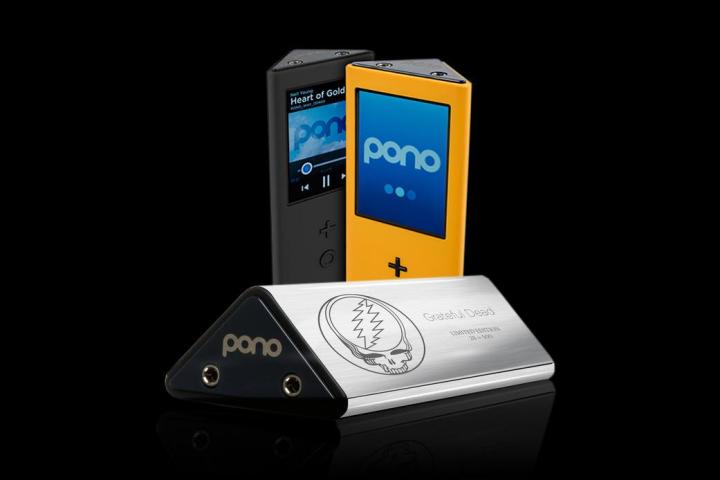
Yesterday was the final day of the astonishingly triumphant Kickstarter funding period for Neil Young’s red-hot PonoPlayer — the high-resolution music player captured enough attention to garner $6.2 million in just 35 days. The campaign is the third-most successful ever completed via the crowdfunding site, not far behind the $10.2 million Pebble and $8.6 million Ouya projects. Young is now aiming to share equity in the company with more traditional investors in an effort to bring his beloved PonoPlayer to market via venture capital, according to a report by The Guardian.
The PonoPlayer had already been on audiophiles’ radar for more than two years when it first hit Kickstarter on March 11, which helps to explain why the device was able to so easily hit the ground running and smash its $800,000 goal within the very first day of funding. Initially, backers could secure a black first edition player — with an estimated delivery slated for October — for an early bird special of $200, shaving off half of the player’s expected $400 MSRP. A $300 pledge secured a regular player in black or yellow, and a $400 pledge nabbed you a chrome edition of the player with laser-engraved signatures from big-name artists including Metallica, Beck, Arcade Fire, Tom Petty, Young himself, and several others.
With the Kickstarter funding phase complete, Young’s project is now poised to take on the more difficult task of actually getting the PonoPlayer to market. A large part of the Pono ecosystem will be centered around Pono Music, a dedicated website for the player which will feature the lossless audio files it is designed to play. HD audio content, or a lack thereof, has been one of the major concerns over the viability of high resolution players that have already hit the market, such as regally priced offerings from the likes of Astell & Kern.

With the PonoPlayer Young hopes to bring the high fidelity of the older analog mediums back to the mainstream music world. Over the years, since the dawn of digital, the general public’s quality standards have incrementally dwindled in the name of convenience and affordability. As a result, today’s music listeners have grown accustomed to the thinner audio reproduction offered by MP3s, which cut around 90 percent of the digital information out of the original recording.
The PonoPlayer can not only carry the much larger — cumbersome, by today’s standards — FLAC (Free Lossless Audio Codec) file type, which retains the full quality of the original recording, but it is also compatible with most of the other popular high-res music formats that won’t be featured in the FLAC-exclusive Pono store. Further, the device is loaded with quality components such as a premium DAC (digital to analog converter) and a high-grade headphone amp, which are paramount to reproducing high-quality audio performance. With those quality components in tow, the Pono should bolster all of your music collection, no matter the file type, at a price that is far below similar products already on the market.
Whether or not Young’s pet project can truly gain a mainstream audience in the rapidly evolving landscape of digital music remains to be seen. For our part, we’re pretty damned excited to check the PonoPlayer out for ourselves. Now all we have to do is wait.


